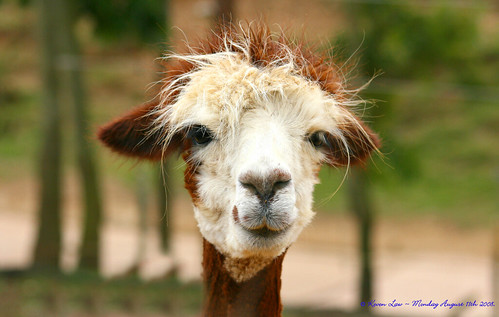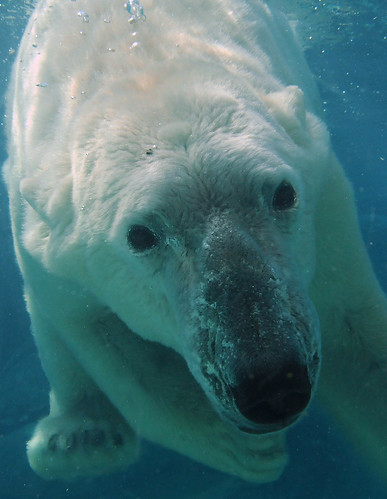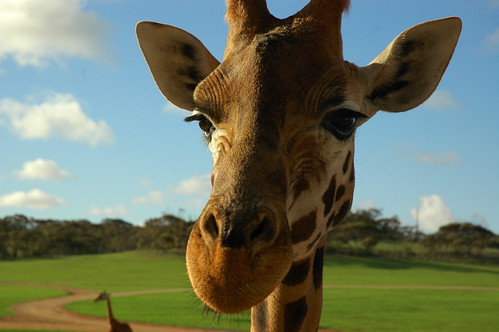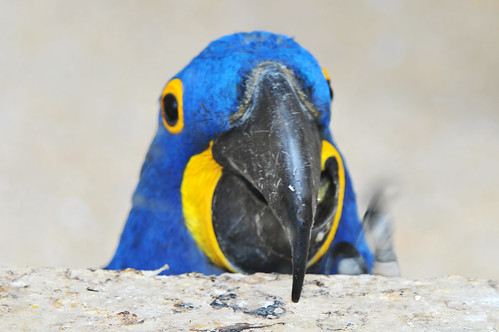Tuesday, March 31, 2009
Friday, March 27, 2009
Wednesday, March 25, 2009
Animal Planet
No mundo animal: o maior quase sempre leva vantagem!
*Foto registrada Parque Municipal de Belo Horizonte
Animal world: the greater almost always takes advantage!
*Registered photo Municipal Park of Belo Horizonte
Tuesday, March 24, 2009
Monday, March 23, 2009
Sunday, March 22, 2009
"You're not going to see OTHER animals, are you?" (return of HWW!)
Willy had been enjoying the water for over an hour and as I was tearing myself away, I took a few last photos!
Have a very Happy Willy Wednesday!
Saturday, March 21, 2009
The giraffe is the only animal born with horns
As giraffes are rarely heard, many people think they are mute. They are generally quiet, but will vocalize by emitting moans, hisses, snores, hisses, coughs, grunts, moos, snorts, bleats (similar to that of a young calf or sheep), low notes, low, fluttering sounds or flute-like sounds or whistles.
Funny blue parrot
The picture is not perfect (I would have preferred if the eyes were on focus), but this guy was looking funny peeking over the wall, that I decided to show it to you! :)
Another animal that came very close
She almost give my camara a lick with her huge tongue...... She defenitly needs to have a shave....(ROFL)
The fastest animal on earth...except today..cause it's my day off...:O)
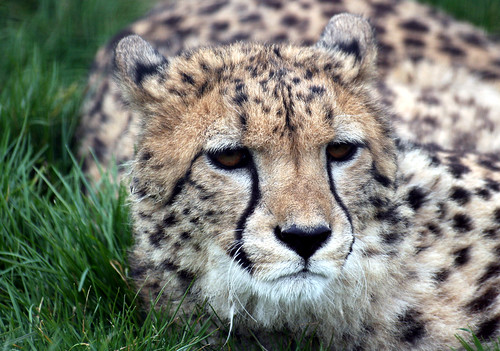
The fastest animal on earth...except today..cause it's my day off...:O), originally uploaded by law_keven.
Cheetah - (Acinonyx jubatus) - Eagle Heights Wildlife Park, Kent, England - Sunday February 24th 2008.
The fastest land animal in the world, the cheetah is a marvel of evolution. The cheetah’s slender, long-legged body is built for speed. Cheetahs are tan in color with black spots all over their bodies. They can also be distinguished from other big cats by their smaller size, spotted coats, small heads and ears and distinctive “tear stripes” that stretch from the corner of the eye to the side of the nose.
Height 2 ½ -3 feet at shoulders
Length 44-53 inches (tail length of 26-33 inches)
Weight 110-140 pounds
Top Speed 70mph
Lifespan 10-12 years
Diet
Staples Gazelles, wildebeest calves, impalas and smaller hoofed animals
Population
In 1900, there were over 100,000 cheetahs across their historic range. Today, an estimated 9,000 to 12,000 cheetahs remain in the wild in Africa. In Iran, there are around 200 cheetahs living in small isolated populations.
Range
Historically cheetahs were found throughout Africa and Asia from South Africa to India. They are now confined to parts of eastern and southwestern Africa and Iran.
Behavior
Found mostly in open and partially open savannah, cheetahs rely on tall grasses for camouflage when hunting. They are diurnal (more active in the day) animals and hunt mostly during the late morning or early evening. Only half of the chases, which last from 20-60 seconds, are successful.
Cheetahs knock their prey to the ground and kill with a suffocating bite to the neck. They must eat quickly before they lose the kills to other bigger or more aggressive carnivores.
Cheetahs are also typically solitary animals. While males sometimes live with a small group of brothers from the same litter, females generally raise cubs by themselves for about a year.
Reproduction
Mating Season Throughout the year.
Gestation Around 3 months.
Litter size 2-4 cubs
Cubs are smoky in color with long, woolly hair – called a mantle – running down their backs. This mantle is thought to camouflage cubs in grass, concealing them from predators. Mothers move cubs to new hiding places every few days. At 5-6 weeks, cubs follow the mother and begin eating from their kills.
Threats
The cheetah’s future is uncertain due to a variety of threats. The biggest is habitat loss due to human encroachment. In addition, they often deal with declines in prey and conflicts with humans. There is also high cub mortality due to predation by carnivores like lions and hyenas that are in competition with the cheetah, as well as genetic inbreeding which leads to abnormalities.



